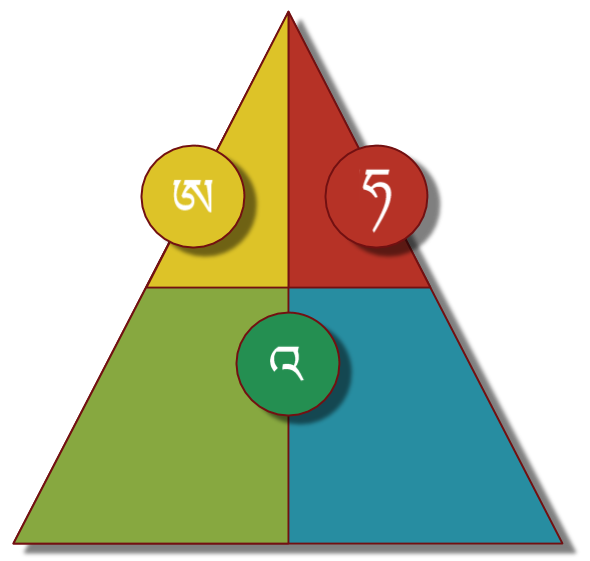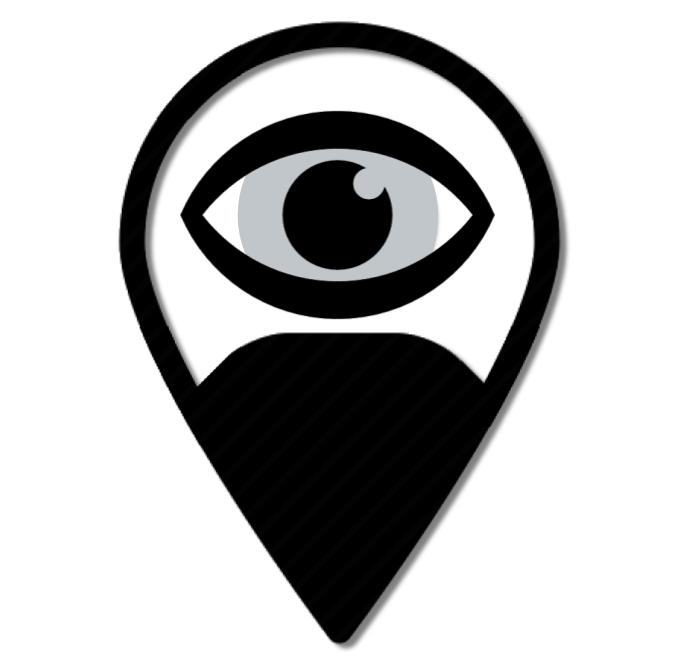![]()
༡་ སློབ་ཚནདང་པོ།
༢་ སློབ་ཚནགཉིས་པ།
༣་ སློབ་ཚནགསུམ་པ།
༤་ སློབ་ཚནབཞི་པ།
༥་ སློབ་ཚནལྔ་པ།
༦་ སློབ་ཚནདྲུག་པ།
༧་ སློབ་ཚནབདུན་པ།
༨་ སློབ་ཚནབརྒྱད་པ།
How to use this book
Design Principles
Credits & Copyright

How to Use this BookDepending on your experience of language learning, some aspects of this book may be unfamiliar. Here, we’d like to take a page or two to explain how you can make best use of the features in a practical setting (for more on some of the theory behind this book, see the section on Design Principles). We'll start by explaining what you'll need, while making some suggestions on how to use this book best.  What do I need?You only need 4 things to use this book effectively: 1) the book itself and a way to view and interact with it; 2) a few basic rules for using the book; 3) a language partner to work with; and 4) a notebook for writing or typing and/or taking notes. 1) The BookThis digital book can be downloaded or viewed online at: www.esukhia.online a) Viewing the BookThis introductory Tibetan language learning book is a digital publication. While you can access this book on many different devices, using many different apps, following some basic instructions will ensure you get the most out of this book.
b) Features of this Bookb.i) Icons:
In "listening" exercises, click on interactive text or images to listen to the audio. Here's an example of an interactive audio button. This one says "ཉོན་ཨ་" (nyön-ah), which means "Listen!" in Tibetan (note that interactive features will prompt you to interact with them by "popping out" of the page when you hover over them):
Play the audio as many times as you want. Even if you have understood the passage, you can still listen again to focus on pronunciation, for example.
Speak the words you hear or see. If you have a language partner, teacher, or friend helping you, they can give you feedback on your spoken Tibetan. Even when you are alone, practice these exercises speaking the words out loud. Research has shown this to be very beneficial when learning a new language!
Read, out loud, the text on the page. Even if you have become used to reading silently, please read these passages aloud. Reading aloud has been shown to be very beneficial when learning a new language. In this way, exercises labelled with the "Read" icon are similar to those labeled "Speak". The difference is in what you, the learner, are focusing your attention on. In reading exercises, focus on text-to-sound patterns; in speaking exercises, focus on sound-to-meaning connections first. Please also note that written Tibetan is quite a bit more formal than spoken Tibetan. When there is a big difference in forms, we have written in the acceptable literary form (black text), but provided the spoken version in recordings, as well as on hover and click: "If we teach informal forms, we're have to write down!"
Open your notebook and write; or, type. The physical act of writing activates important regions of the brain, enhancing the links between the meaning and the visual form of the language you are learning. Also, when we write, we think about and prepare the language differently to when we speak. So please take your time when completing these writing exercises. In many of the exercises where you are asked to write, you will be presented with a blank text box. Type inside the text box to provide the right answer. When the right answer is given, the box will "light up" yellow. Try an example here: The four skills we practice in language-learning are: speaking, listening, reading, and ____: Sometimes, the answers are provided in blurred-out text like this: this is a sample answer! Simply scroll your mouse over the blurry text to reveal the answer! Please avoid peaking until you have completed the exercise yourself! (Remember, there is no credit to earn, nor is there any test to pass, so you are only cheating yourself!).
Dialogs are texts (with or without audio) that indicate a conversation between two people. Use these as an opportunity to learn the "back-and-forth" of Tibetan. Also be especially aware of the social contexts the conversations appear in. Try to put yourself in the shoes of one speaker, and then the other!
Read-along exercises are specially-coded to synchronize text and audio. Familiarize yourself with the special audio control bar. This control bar will allow you to play the audio (press "play") while simultaneously highlighting the text, word-by-word. You will also find options on this bar for: 1) slowing down or speeding up the audio; 2) changing the color of the highlights; or 3) enabling "touch to play", which allows you to directly click on text to initiate audio playback.
After listening or reading, point out the correct option (by clicking on the appropriate box). For example: This answer is right. This answer is wrong. In some matching exercises, the sentences are numbered with Tibetan numerals. The correct answer is the blurred out number which matches it: (scroll over with your mouse): ༡་ To prepare for these exercises, you may want to study the Tibetan numerals:
Using gestures, pantomime, sound effects, or body language, act out what you hear or see.
Some of these exercises are designed to practice recognition of language without having to produce any language yourself. Others are designed to activate your creativity – language use is always a creative act!
This icon is used for pair-work exercises; along with a partner, one of you is “blue” the other is “yellow”. They are often designed to motivate genuine communication because “blue” is looking at different information to “yellow”. If you know other students learning Tibetan (in a Tibetan class, perhaps), you can do this exercise with them. Alternatively, your teacher or language partner can be the second person. Depending on the exercise design, it may be useful to repeat the exercise from the perspective of the second color.
Click on the link to go to the “yellow” version of the pair-work exercise; follow the instructions and communicate with “blue” to complete the task. When you're finished, click the link at the bottom of the page to move on to the next exercise!
Click on the link to go to the “blue” version of the pair-work exercise; follow the instructions and communicate with “yellow” to complete the task. When you're finished, click the link at the bottom of the page to move on to the next exercise! b.ii) Color-coding Pronunciation
"Three Root Vowels" Our color-coded pronunciation guide is based on the traditional 3 root vowels—”A,” “HA,” and “AA.” Understanding the difference in accentuation and aspiration between these basic vowels gives students a foundation for hearing the difference between all the letters of the Tibetan alphabet.
The Triangle The four colors of the pronunciation triangle represent the four main sounds of central standard Tibetan by combining the traditional 3 root vowels with features described by modern linguistics: 1) Yellow: unaspirated, high tone; 2) Red: aspirated, high tone; 3) Blue: aspirated, low tone; and 4) Green: unaspirated, low tone.
High Tone Yellow and Red colors represent sounds that are “high” and “sharp.” Their symbol is the upward-pointing arrow. While there isn’t a ready corollary in western languages, listen for aspects of yellow and red sounds like: pitch (higher); duration (shorter); and accentuation (sharper).
Low Tone Blue and Green colors represent sounds that are “low” and “relaxed.” Their symbol is a downward-pointing arrow. While there isn’t a ready corollary in western languages, listen for aspects of blue and green sounds like: pitch (lower); duration (longer); and accentuation (duller).
Unaspirated Yellow and Green colors represent sounds that are “unaspirated;” they are symbolized by a candle with a steady flame. Imagine holding a candle in front of your mouth when you are speaking – the flame does not flicker for unaspirated sounds. That’s because very little air is expelled by the breath when speaking them. In English, for example, you can hear a difference between the “p” sound in “pin” (aspirated – the candle's flame flickers) and “spin” (unaspirated – the candle's flame is steady). While English and many Western languages don’t consider these different sounds to be different letters, many Asian languages do! In Tibetan (unlike English), an unaspirated sound can also begin a word. Practice by holding a hand in front of your mouth: First say “pin” and then say “spin.” Can you feel the difference from the breath on your hand? Say “spin” again. Can you isolate the “p” sound of “spin”? The “k” sound of “skin”? ...
Aspirated Red and Blue colors represent “aspirated” sounds. Their symbol is the flickering candle; this represents the breath that’s expelled when pronouncing these sounds. These sounds will generally feel more familiar to speakers of Western languages (where p, t and k, for example, are aspirated whenever they start a word in English). b.iii) Verb Icons Verbs in Tibetan follow a system based on 'evidentiality'. Most second language learners are used to strict grammars where the verbs used are fixed based on the relationship between items within the information itself. In contrast, Tibetan verbs are flexible and depend upon the the relationship between the speaker and the information. We've left icon clues to help second language learners see the difference between how different verb forms are used in Tibetan. These are based on two spectrums (note that these are not strict category systems—keep in mind that overlaps and ambiguities are natural, as verbs in Tibetan are context and speaker-dependent constructions!): b.iii.1) Spectrum of Space
'Near' verbs are personal in nature; they have a subjective quality about them, and communicate the speaker's 'nearness' to the information or event, or subjective control of an action. We've adopted the 'you are here' pin-drop with a bold person to indicate the 'personal' or 'near'.
'Perceived' verbs are a special sub-category of the 'personal' or 'near'; they mark information that the speaker has subjective experience of (things the speaker is direcly experiencing happen through one of the five senses). We add an eye to our pin-drop to show the direct, perceptual nature of these verbs.
'Far' or 'impersonal' verbs are general facts, common knowledge, or other information received from a third party. The icon for the 'impersonal' is the shared network icon. This information is available across one's social network (it is not unique to the 'personal' perspective), or it's related to someone else's experience (meaning the speaker only has access of it indirectly, through or because of the network). b.iii.1) Spectrum of Time
'Immediate' events or actions occur, or are occuring, in the speaker's immediate vicinity (in time and space). They are local, direct, singular or unique, and current or very recent (within the contextual frame of reference). A drop of water initiating ripples indicates the 'immediate'.
'Continuous' events and actions are ones that re-occur over and over again. They are a stable, yet also changeable and/or circumstantial, set of actions or facts that define the speaker's reality. The ripples spreading out across the globe indicate 'continuous'-type verbs.
'Permanent' events or actions are fixed facts (as far as the speaker is concerned). They are a super-continuous state of affairs, or general or common knowledge. A solid globe indicates these fixed facts of the matter for 'permanent' verbs.  2) Basic RulesThere are a few basic rules to follow if you want to get the most out of this book and the way it was designed. We have consolidated these into 3 modern, research-based principles for learning language: 1) 100% Tibetan; 2) 100% speaking; and 3) 100% positivity. Let us explain the reasoning behind these for you briefly: a) 100% Tibetan
b) 100% Speaking
c) 100% Positivity
 3) Language PartnerRemember that language is communication—in other words, it is about giving or receiving a message. This is an activity which requires at least two people! After all, for every giver there must be a receiver. “Language” is thus necessarily a social activity. Even if you read alone, the author speaks to you. “Language partners” are simply the people you communicate with in Tibetan. They may be a native speaker; a classmate; or even yourself! While all the exercises in this book are suitable to work on with language partners, the pair work exercises are especially designed for it. Remember to follow your basic rules of 100% Tibetan, 100% Speaking, and 100% Positivity when working with your language partners.  4) NotebookFirst and foremost, remember to follow the 100% Tibetan rule for all note-taking. Try drawing pictures rather than using English or any other language in your notes. Also use your notebook to practice the writing exercises given in this book. Again, keep it Tibetan only. And while we've provided text fields for many of the exercises, keep in mind that this text will not be saved between sessions! Addionally, handwriting is a more physical act than typing, and linking physical actions with new language has been shown to have benefits for many people. But if you learn to type in Tibetan, then keeping a digital notebook is also possible. Keep in mind, however, that a pen and paper makes it easier to draw pictures – unless, of course, you have sketchpad software! Try practicing the Tibetan you learn in practical contexts. Use Tibetan to make your grocery lists and to-do lists. Use Tibetan to write about your day in a diary or journal. Talk to yourself in Tibetan. Rehearse possible conversations, such as in a café or shop, even if they will take place in another language! After interacting with people, ask yourself “How would I have said that in Tibetan?” Find a WeChat penpal. Read and write FaceBook comments in Tibetan. Join a Tibetan-only forum or read a Tibetan blog. The most important thing is to find something that interests you and try to use Tibetan for doing it. Remember, the different language skills (reading, writing, listening, speaking) are cooperative and interdependent: The better you get at writing Tibetan, the better you’ll get at reading it. The more you practice by writing down, the quicker the words and expressions will come to you when you are speaking. Don’t waste any time – take a moment and ask yourself right now:
 |

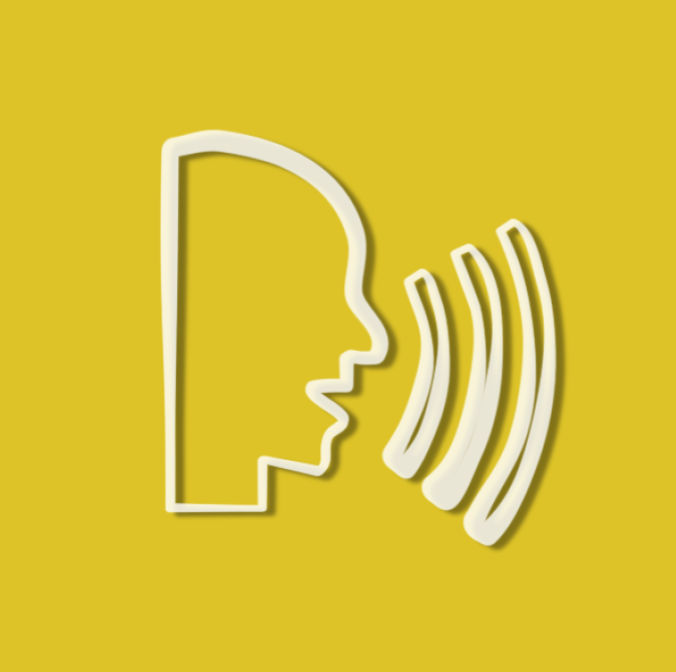







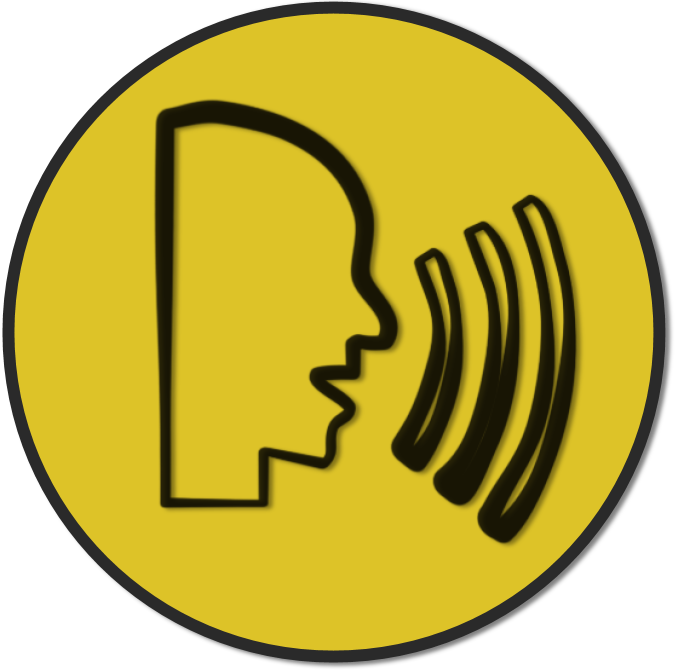 “
“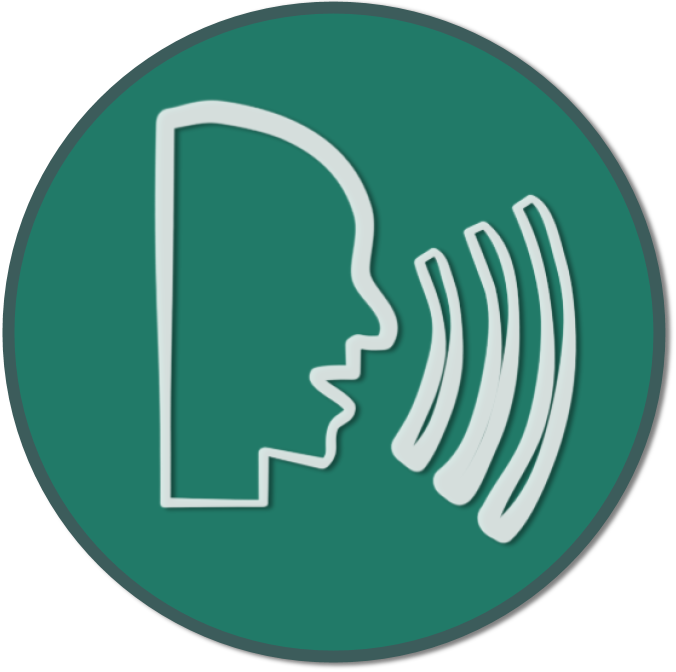 “
“